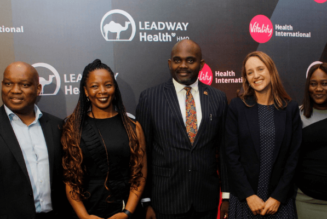4-minute read

NJ Budget 2024: Murphy on Cover All Kids, Veterans and Maternal health
In his 2024 NJ budget speech, Phil Murphy touched on Cover All Kids, as well as Veterans and Maternal health.
Paul Wood Jr, NorthJersey.com
Thirteen miles separate Trenton from Princeton, and so do 15 years in life expectancy.
In Trenton — a city of mostly Black and Latino residents where 28% live in poverty — life expectancy is 73 years. In the mostly white college town of Princeton, where the median household income of $165,000 is more than four times that of Trenton, life expectancy is 87 years.
Such a huge divide is emblematic of systemic problems that continue to hamper all New Jerseyans seeking access to quality health care, a new report by the Robert Wood Johnson Foundation found.
Even though New Jersey is often viewed as among the most progressive, diverse and wealthy states, living a healthy life in the Garden State often runs along racial and economic lines, where race, ethnicity and class can act as roadblocks to positive outcomes.
“We can’t think of a person’s well-being without first considering whether they have equal access to everything that contributes to it: good housing, employment, nutrition,” said Maisha Simmons, a senior director at the foundation.
But that’s just not happening in New Jersey.
Danger from diseases
State Health Department data shows that Black residents are more likely to be stricken with and die from a cornucopia of diseases than whites, Hispanics and Asians. Among them:
- Asthma.
- Cancer.
- Cardiovascular disease.
- Diabetes.
- Kidney disease.
- HIV/AIDS and other.
The Robert Wood Johnson report released this month doesn’t bear down on disease categories or the state’s health care infrastructure. Instead, it mostly examines “health inequity,” the uneven distribution of social and economic resources affecting health. It is the latest in a growing body of work that shines a spotlight on the health disparities among minorities in New Jersey.
COVID’s disproportionate impact
A 2020 USA Today Network investigation found that the COVID death rate was much higher in counties like Essex and Union, with more people of color living in mostly densely packed, poorer communities. As the pandemic continued, the proportion of COVID deaths by race moved closer to the racial breakdown of New Jersey’s population, but white and Black residents still had higher proportions, recent Health Department data shows.
Meanwhile, a report released this month by the New Jersey Health Care Quality Institute showed that many hospitals that serve predominantly minority communities received lower grades for patient safety.
Among the reasons may be how New Jersey’s housing market for decades propelled segregation. The Robert Wood Johnson report zeroes in on housing from instances of redlining — the practice in which banks weighed risk for lending, with minority neighborhoods considered riskiest, therefore blocking access to capital investment — combined with the practice of racial covenants, or clauses in property deeds that restrict a home’s future ownership to white buyers.
The report also notes the role of gentrification, in which mostly white, upwardly mobile people settle into a lower-income neighborhood, propelling market forces to raise prices and eventually force longtime renters out.
Racial gap in maternal care
The New Jersey Hospital Association reported in January that the number of cesarean sections and serious childbirth complications had decreased in recent years. But the report also showed that a significant racial gap still remains in maternal care, especially among Black women, who are more likely to develop serious complications than white women, including hypertension and hemorrhaging. Asian and Hispanic women also had higher rates, according to the report, which analyzed data from 2020 and 2021.
The Robert Wood Johnson report said “New Jersey has among the most significant disparities” in maternal health and it must be prioritized to provide a level playing field at the start of life. Black infants are more than three times as likely to die before their first birthday than white infants. Black mothers are more than seven times as likely as white mothers to die from pregnancy-related complications.
A number of solutions
Among the solutions that the foundation suggests is more investment in recruiting, training and paying doulas, midwives and community health workers to help pregnant minority women.
Simmons said the foundation would work with its nonprofit partners to help address some of these issues, but a lot of the burden has to be taken up by lawmakers, along with Gov. Phil Murphy’s administration and administrations to come.
“Unfortunately, there’s no one magic answer to reverse all this,” Simmons said. “It takes a sustained effort to make these types of changes.”









